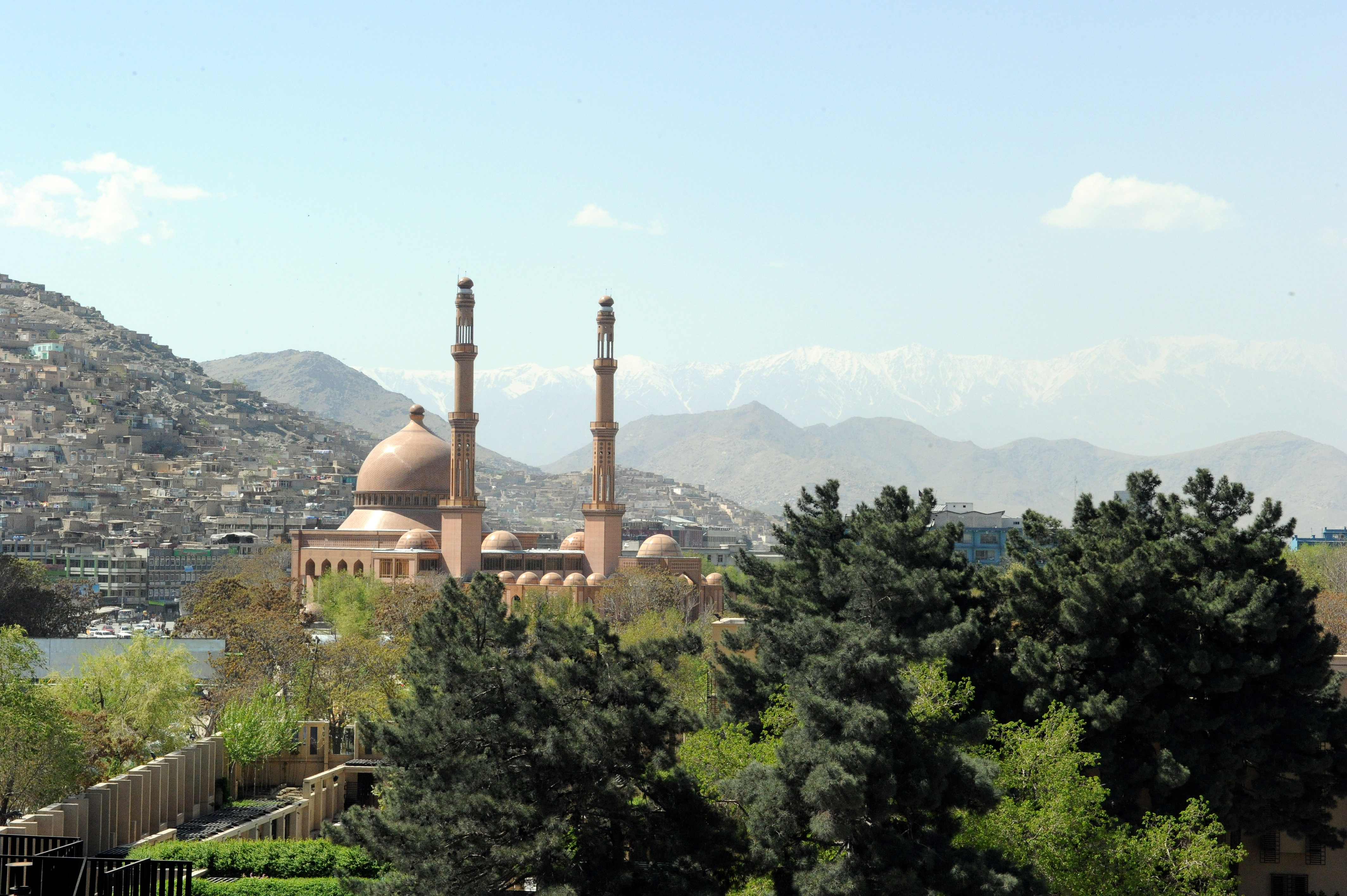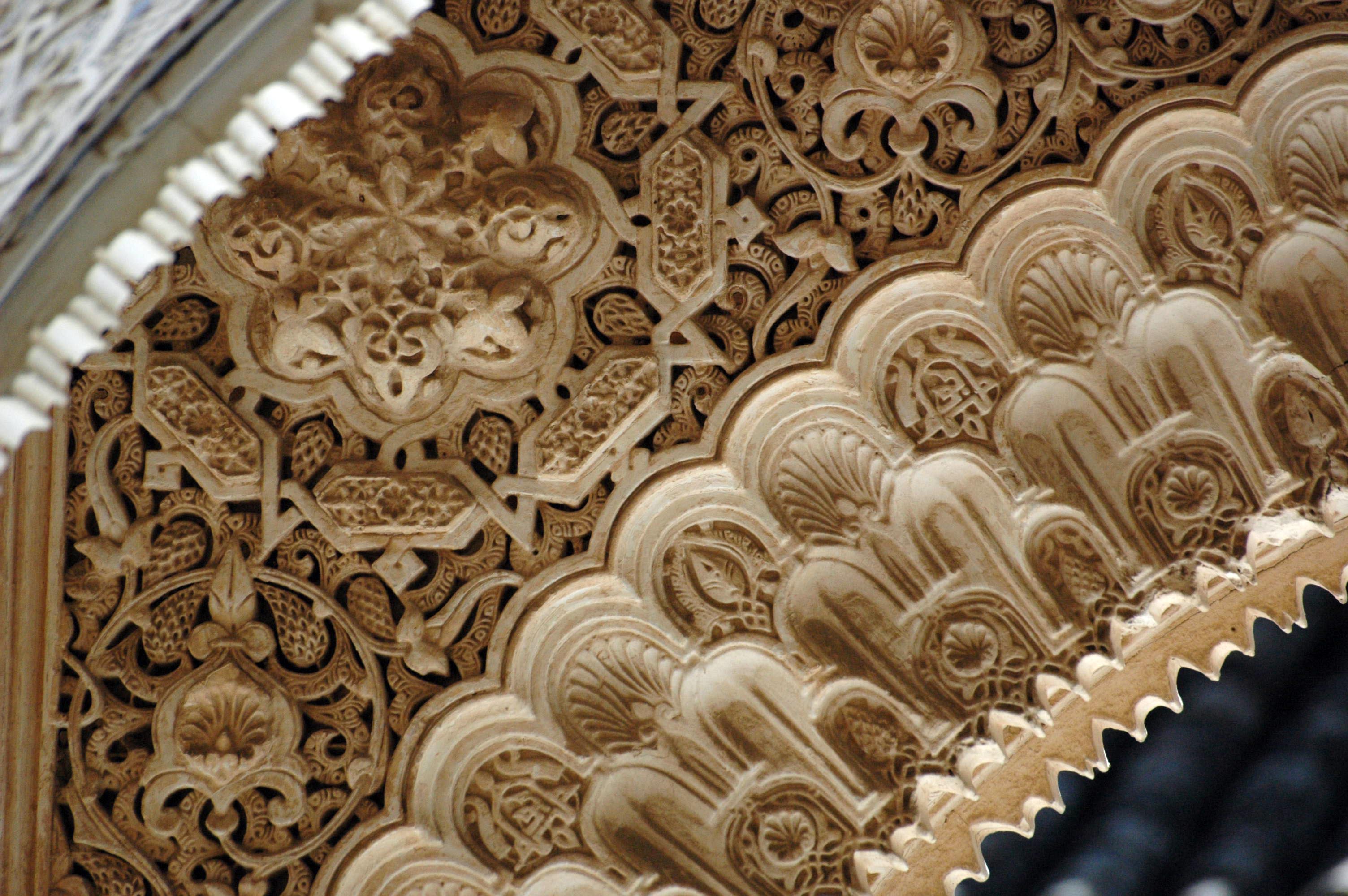|
National Mosque Of Malaysia
The National Mosque of Malaysia ( ms, Masjid Negara Malaysia) is a mosque in Kuala Lumpur, Malaysia. It has a capacity for 15,000 people and is situated among of gardens. Its key features are a minaret and a 16-pointed star concrete main roof. The umbrella, synonymous with the tropics, is featured conspicuously – the main roof is reminiscent of an open umbrella, the minaret's cap a folded one. The folded plates of the concrete main roof are a creative solution to achieving the larger spans required in the main gathering hall. Reflecting pools and fountains spread throughout the compound. Completed in 1965, the mosque is a bold and modern approach in reinforced concrete, symbolic of the aspirations of a then newly independent nation. History Malaya gained its independence from the British government on 31 August 1957. Major development programs in areas of the economy, social, and architecture were actively implemented in line with the new government. The programs were ... [...More Info...] [...Related Items...] OR: [Wikipedia] [Google] [Baidu] |
Sunni Islam
Sunni Islam () is the largest branch of Islam, followed by 85–90% of the world's Muslims. Its name comes from the word '' Sunnah'', referring to the tradition of Muhammad. The differences between Sunni and Shia Muslims arose from a disagreement over the succession to Muhammad and subsequently acquired broader political significance, as well as theological and juridical dimensions. According to Sunni traditions, Muhammad left no successor and the participants of the Saqifah event appointed Abu Bakr as the next-in-line (the first caliph). This contrasts with the Shia view, which holds that Muhammad appointed his son-in-law and cousin Ali ibn Abi Talib as his successor. The adherents of Sunni Islam are referred to in Arabic as ("the people of the Sunnah and the community") or for short. In English, its doctrines and practices are sometimes called ''Sunnism'', while adherents are known as Sunni Muslims, Sunnis, Sunnites and Ahlus Sunnah. Sunni Islam is sometimes refe ... [...More Info...] [...Related Items...] OR: [Wikipedia] [Google] [Baidu] |
Kuala Lumpur Railway Station
( Jawi) zh, 吉隆坡 ta, கோலாலம்பூர் , address = Jalan Sultan Hishamuddin, 50621 Kuala Lumpur , borough = , country = Malaysia , coordinates = , grid_name = , grid_position = , elevation = , owned = Keretapi Tanah Melayu , operator = , manager = , transit_authority = , line = West Coast Line , distance = , platforms = 2 side platform and 1 island platform , tracks = 4 , train_operators = , connections = Connecting station to Pasar Seni via a 400-metre pedestrian walkway , structure = , depth = , levels = , parking = , bicycle = , disabled = , architect = Arthur Benison Hubback , architectural_style = Indo-Saracenic , status = , code ... [...More Info...] [...Related Items...] OR: [Wikipedia] [Google] [Baidu] |
Islam In Malaysia
Islam in Malaysia is represented by the Shafi‘i school of Sunni jurisprudence.malaysianbar.org:PRESS STATEMENT: Malaysia a secular State 18 July 2007Wu & Hickling, p. 35. Islam was introduced to Malaysia by traders arriving from , China and the Indian subcontinent. It became firmly established in the 15th century. In the |
List Of Mosques
This is an incomplete list of some of the more famous mosques around the world. List See also * Islamic architecture * List of largest mosques * List of the oldest mosques in the world ** List of mosques that are mentioned by name in the Quran * List of mosques in the Arab League ** List of mosques in the United Arab Emirates * List of mosques in Africa ** List of mosques in Algeria ** List of mosques in Egypt * List of mosques in Asia ** List of mosques in Afghanistan ** List of mosques in Armenia ** List of mosques in Azerbaijan ** List of mosques in Bangladesh ** List of mosques in China ** List of mosques in Hong Kong ** List of mosques in India ** List of mosques in Indonesia ** List of mosques in Iran ** List of mosques in Iraq ** List of mosques in Israel ** List of mosques in Japan ** List of mosques in Kuwait ** List of mosques in Malaysia ** List of mosques in Pakistan ** List of mosques in Singapore ** List of mosques in Syria ** List of mosques in Ta ... [...More Info...] [...Related Items...] OR: [Wikipedia] [Google] [Baidu] |
Islamic Art
Islamic art is a part of Islamic culture and encompasses the visual arts produced since the 7th century CE by people who lived within territories inhabited or ruled by Muslim populations. Referring to characteristic traditions across a wide range of lands, periods, and genres, Islamic art is a concept used first by Western art historians since the late 19th century. Public Islamic art is traditionally non- representational, except for the widespread use of plant forms, usually in varieties of the spiralling arabesque. These are often combined with Islamic calligraphy, geometric patterns in styles that are typically found in a wide variety of media, from small objects in ceramic or metalwork to large decorative schemes in tiling on the outside and inside of large buildings, including mosques. Other forms of Islamic art include Islamic miniature painting, artefacts like Islamic glass or pottery, and textile arts, such as carpets and embroidery. The early developments of Isla ... [...More Info...] [...Related Items...] OR: [Wikipedia] [Google] [Baidu] |
Islamic Architecture
Islamic architecture comprises the architectural styles of buildings associated with Islam. It encompasses both secular and religious styles from the early history of Islam to the present day. The Islamic world encompasses a wide geographic area historically ranging from western Africa and Europe to eastern Asia. Certain commonalities are shared by Islamic architectural styles across all these regions, but over time different regions developed their own styles according to local materials and techniques, local dynasties and patrons, different regional centers of artistic production, and sometimes different religious affiliations. Early Islamic architecture was influenced by Roman, Byzantine, Iranian, and Mesopotamian architecture and all other lands which the Early Muslim conquests conquered in the seventh and eighth centuries.: "As the Arabs did not have an architectural tradition suited to the needs of a great empire, they adopted the building methods of the defeated Sas ... [...More Info...] [...Related Items...] OR: [Wikipedia] [Google] [Baidu] |
Timeline Of Islamic History
This timeline of Islamic history relates the Gregorian and Islamic calendars in the history of Islam. This timeline starts with the lifetime of Muhammad, which is believed by non- Muslims to be when Islam started, though not by Muslims.Esposito (2002b), pp. 4–5. Broad periods (Gregorian and Islamic dates) ;Muhammad and the Rashidun Caliphs * 6th century CE (13 BH – 23 AH) ;The Umayyad Caliphate, the Abbasid Caliphate and its fragmentation, the Mamluk Sultanate, the Delhi Sultanate * 7th century CE (23 AH – 81 AH) * 8th century CE (81 AH – 184 AH) * 9th century CE (184 AH – 288 AH) * 10th century CE (288 AH – 391 AH) * 11th century CE (391 AH – 494 AH) * 12th century CE (494 AH – 597 AH) * 13th century CE (597 AH – 700 AH) * 14th century CE (700 AH – 803 AH) ;Regional empires and dynasties (Ottoman Empire, Safavid Empire, Mughal Empire) * 15th century CE (803 AH – 906 AH) * 16th century CE (906 AH – 1009 AH) * 17th century CE (1009 AH – 1112 ... [...More Info...] [...Related Items...] OR: [Wikipedia] [Google] [Baidu] |
Go KL City Bus
Go KL City Bus (style as ''GOKL CityBus'') is a free bus service in the city centre of Kuala Lumpur, Malaysia. Previously managed by Land Public Transport Commission (SPAD), the services were taken over by Kuala Lumpur City Hall (DBKL) by 1 January 2019. History The free service were introduced by SPAD to help users save money by allowing users to move around Kuala Lumpur with no cost. Kuala Lumpur City Centre, Bukit Bintang and Chinatown areas are the first places to enjoy the service since it was launched on 31 August 2012 with 2 routes, namely the Purple and Green Lines. On 1 May 2014, the free service has added two routes, namely Red and Blue Lines, covering Chow Kit, Kampung Baru, KL Sentral and Bukit Bintang, thus making four different circular city routes that can be identified by the colour of the routes. By 1 January 2019, the service was taken over by Kuala Lumpur City Hall due to the termination of SPAD in 2018. Since then, the service now focuses on the feeder ro ... [...More Info...] [...Related Items...] OR: [Wikipedia] [Google] [Baidu] |
Kelana Jaya Line
The LRT Kelana Jaya Line is a medium-capacity light rapid transit (LRT) line and the first fully automated and driverless rail system in the Klang Valley, Malaysia. It forms a part of the Klang Valley Integrated Transit System in and around Kuala Lumpur, Malaysia. Servicing 37 stations, the line has 46.4 km of grade-separated tracks running mostly on underground and elevated guideways. Formerly known as the PUTRA LRT, it is operated as part of the RapidKL system by Rapid Rail, a subsidiary of Prasarana Malaysia. The line is named after its former terminus, the Kelana Jaya station. The line is numbered and coloured on official transit maps. History Construction began in 1994, about the same time as construction of the Ampang Line. The tunnels were constructed by Hazama Corporation and Hyundai E&C. Operation commenced on 1 September 1998 between Subang Depot and Pasar Seni, with phase two, Pasar Seni to Terminal Putra, on 1 June 1999. In 2002, the line carried it ... [...More Info...] [...Related Items...] OR: [Wikipedia] [Google] [Baidu] |
KTM Komuter
KTM Komuter is a commuter rail system in Malaysia operated by Keretapi Tanah Melayu (KTM). It was introduced in 1995 to provide local rail services in Kuala Lumpur and the surrounding Klang Valley suburban areas. Services were later expanded to other parts of Malaysia with the introduction of the Northern and Southern sectors. The service uses air-conditioned electric multiple units in 3 and 6 car formations. KTM Komuter contributed RM146.2 million to group revenue in 2017, carrying a total of 37.235 million passengers. The total number of passengers travelling with KTM Komuter in 2017 shows a decrease of 10.2%. This can be attributed to reduced service frequency due to the ongoing Klang Valley Double Tracking (KVDT) rehabilitation project. Network Current Network Central Sector KTM Komuter's 287 km (109 mi) network in the Central Sector mainly covers the Klang Valley. It has 53 stations. It consists of two cross-city routes, namely the Port Klang Line ( Tanjung Malim to Po ... [...More Info...] [...Related Items...] OR: [Wikipedia] [Google] [Baidu] |
Kuala Lumpur Railway Station
( Jawi) zh, 吉隆坡 ta, கோலாலம்பூர் , address = Jalan Sultan Hishamuddin, 50621 Kuala Lumpur , borough = , country = Malaysia , coordinates = , grid_name = , grid_position = , elevation = , owned = Keretapi Tanah Melayu , operator = , manager = , transit_authority = , line = West Coast Line , distance = , platforms = 2 side platform and 1 island platform , tracks = 4 , train_operators = , connections = Connecting station to Pasar Seni via a 400-metre pedestrian walkway , structure = , depth = , levels = , parking = , bicycle = , disabled = , architect = Arthur Benison Hubback , architectural_style = Indo-Saracenic , status = , code ... [...More Info...] [...Related Items...] OR: [Wikipedia] [Google] [Baidu] |




.jpg)

.jpg)
